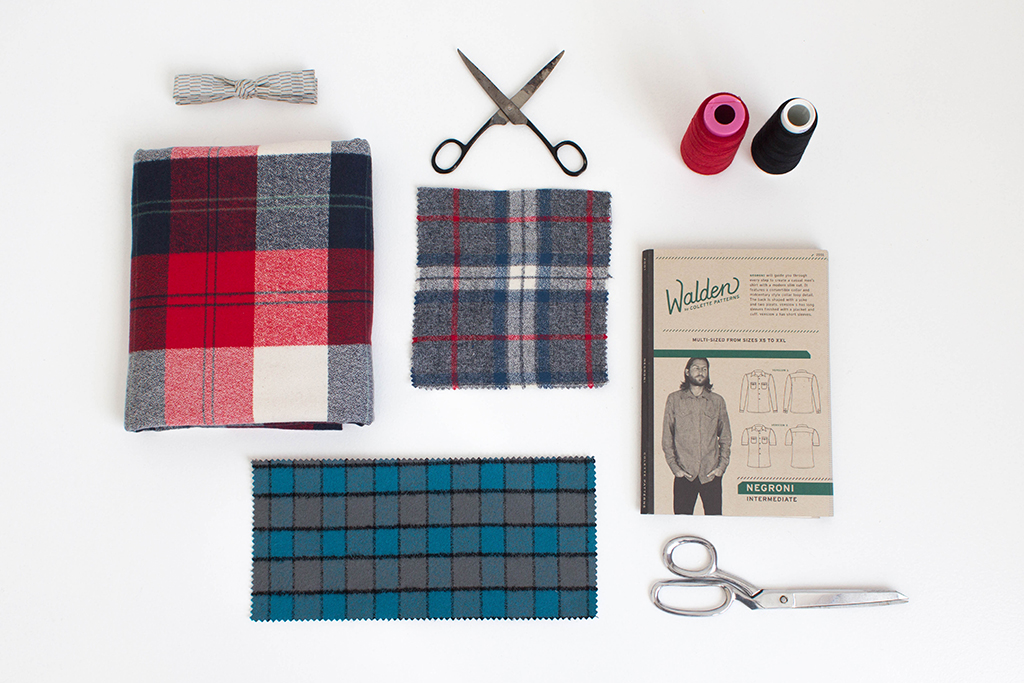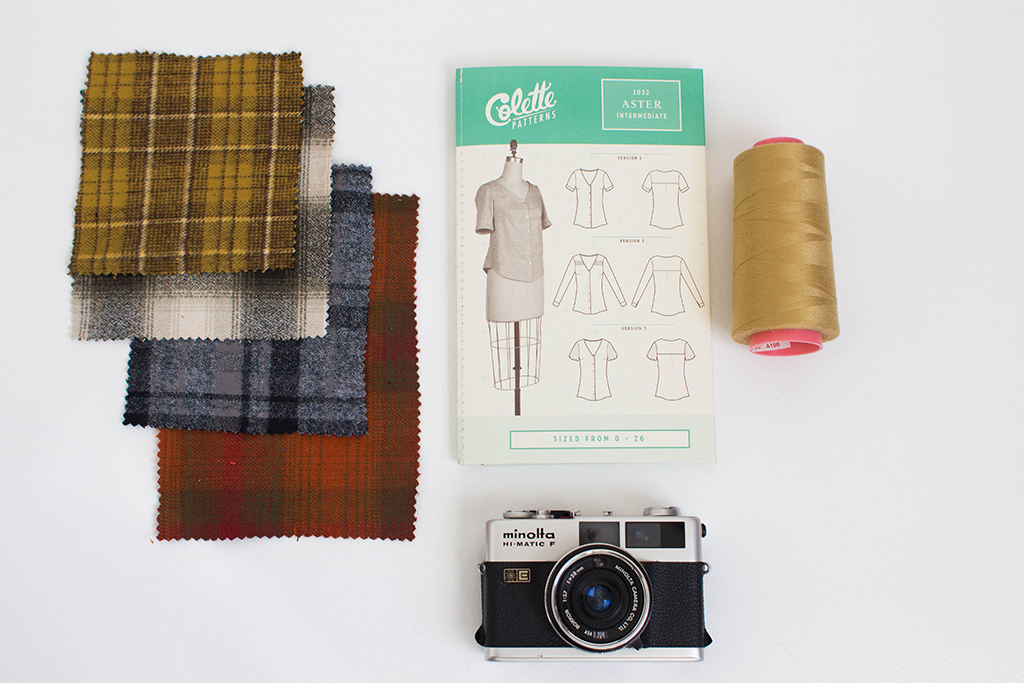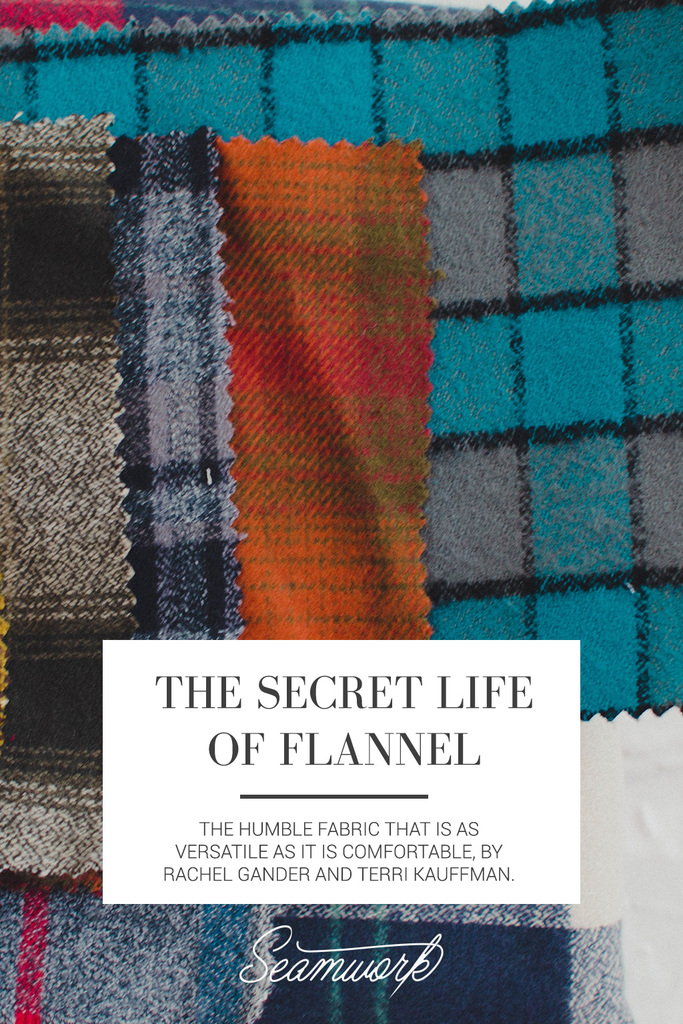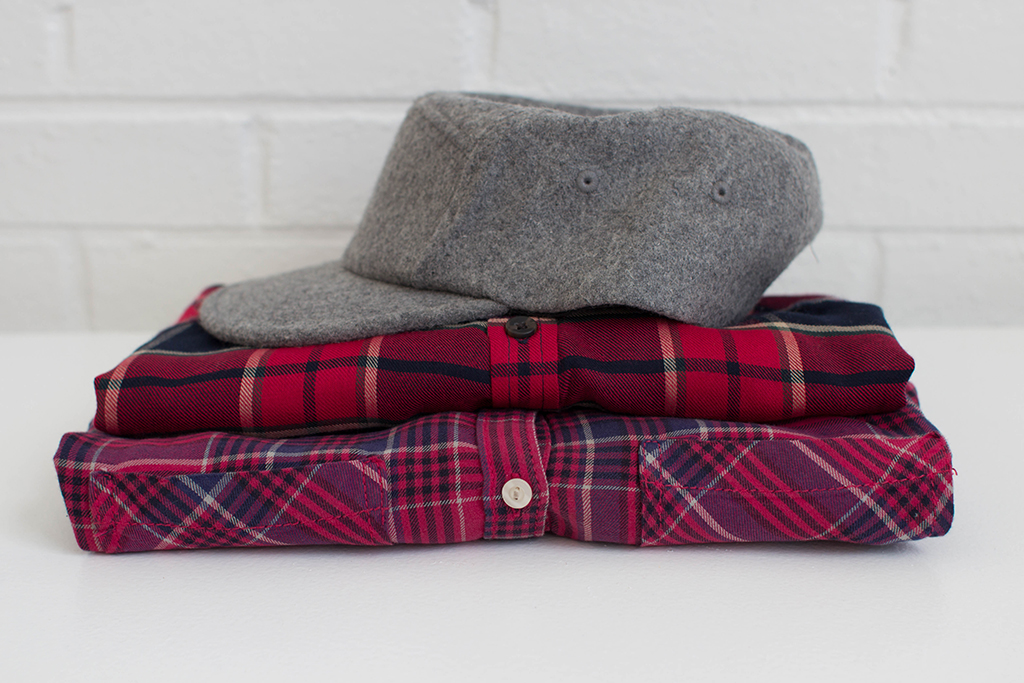
What do you think of when you think of flannel?
Most people picture lumberjacks, the 90s grunge scene, and cozy sheets, but flannel is so much more than that! Along with its unmatched ability to hold in heat and wick away moisture, flannel is both sturdy and soft to the touch—making flannel a true fabric for the masses. From the tiniest baby to the most rugged outdoorsman (or woman), and all the hipsters and sheet-lovers in between, flannel has something for every member of the family. Though it's generally inexpensive and easy to work with, there is much to learn before getting started to be sure your next project is a success!
Origin
The most basic thing to understand about flannel is that it is a fabric, not a pattern. Many people assume that all plaid shirts are flannel shirts, but plaid is a pattern, not a fabric. If you want to get technical, plaid is a piece of fabric with a tartan pattern on it. Tartan has ancient origins, dating back to at least the sixth century B.C. hailing primarily from the Celtic tradition.
While tartan plaids have a long history, flannel has a more modern provenance. The origin of the word is unknown, but a fabric similar to flannel has been traced back to Wales as early as the sixteenth century. It was popular, because it was warm, sturdy, and inexpensive, making it the perfect choice for outdoor work garments. Its popularity grew after the Industrial Revolution and with the onset of mass production.
Flannel first made its way to the United States in 1869, when it was used to make underwear in the form of long johns and then became a staple fabric for bedding and other household uses.
At the turn of the twentieth century, as logging and railroad building became an increasingly large segment of the American workforce, working men needed a fabric that would stand up to hard labor but still allow them the necessary ability to move around freely. It became even more common during the Great Depression when white-collar men were forced to trade in their suits and ties for blue-collar workwear. By the 1950s, Paul Bunyan, in his iconic tartan red flannel, had become a symbol of American machismo.
In the 90s, Kurt Cobain turned not giving a damn into a fashion explosion, proving that style and practicality didn't have to be mutually exclusive and that you don't have to be rich and uncomfortable to be hip and fashionable. There is not a more perfect fabric with which to make that statement than the warm, inexpensive, comfortable versatility of flannel!
Types and Applications
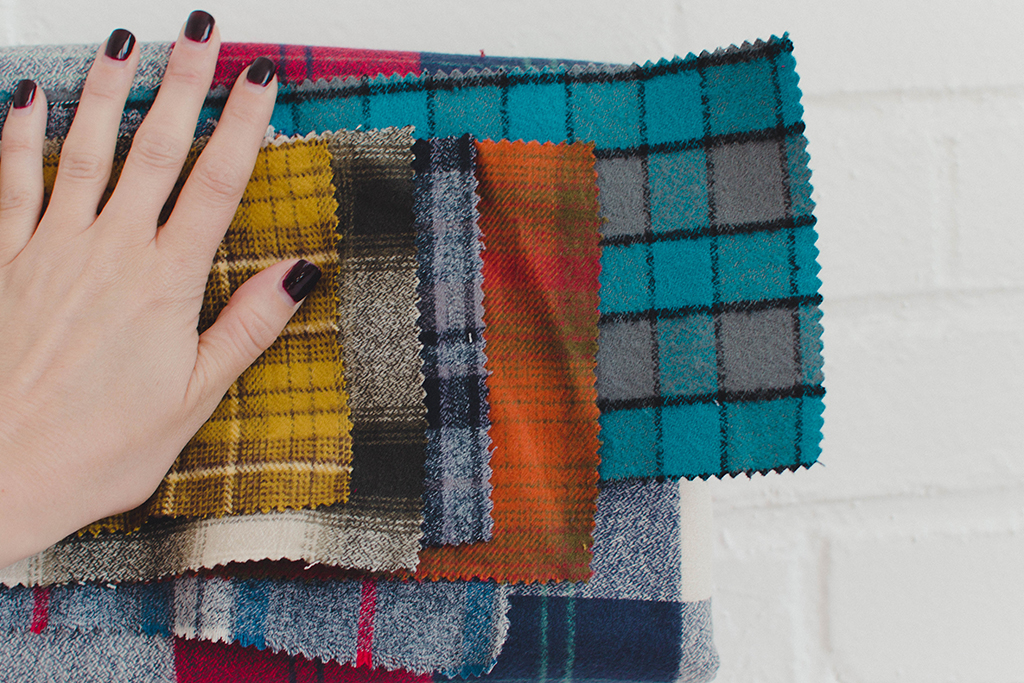
Originally, flannel was made from either carded wool or worsted yarn, but modern flannels can be made from either wool, cotton, or synthetic fiber. It can be woven with either a twill or a plain weave, and then is typically napped or brushed to give it that extra softness we expect from flannel. Otherwise, its softness is derived from the loosely spun yarn it is woven from. It's that extra softness that makes flannel an excellent choice for bedding, especially for quilts and winter sheets. Young or old, male or female, rich or poor, there is no better escape from a cold night in the dead of winter than curling up under those soft-napped fabrics.
Likewise, its softness and warmth make it an excellent fabric choice for any project made for babies, perfectly cuddling their soft skin. There is even a fabric choice called "baby flannel," which is lightweight and breathable for nighttime sleeping. Older kids will also appreciate the cuddliness of a warm set of flannel pajamas for the winter!
Many modern flannels are produced from cotton, as opposed to wool, to take advantage of the softness while avoiding its intense heat-saving properties. For those of us working outdoors, however, we may want to return to the original wool and its ability to not only keep us comfortable, but to hold in our natural body heat during a long winter workday. Making your own flannel shirts will be not only be rewarding, but will allow you to find the exact pattern you're looking for with just the right fit. While men’s flannel shirts may be easy to come by in any store selling rugged, outdoor garments, it may not be so easy for the working woman to find something that offers not only the warmth and sturdiness of a well-made flannel shirt, but also delivers a cut that fits a woman's curves with a pattern and colors that won’t remind you of Paul Bunyan.
While flannel still holds a large and persistent foothold in our everyday fabrics, one item that has become increasingly difficult to find is a pair of standard, gray, flannel trousers. Kurt Cobain and the abundance of flannel pajamas have rocketed the fabric down the path of casual wear, and flannel trousers have been left behind. These used to be a staple of the American male closet but have drifted out of style, which is a shame considering their versatility. They look as sharp as a pair of worsted wool trousers, but with their enviable drape and softness, they are casual enough to be worn with an everyday button-down or a comfortable polo. They are also dressier than jeans, yet similarly durable and resistant to stains and wrinkling. Despite the advantages, purchasing a pair of flannel trousers is not an easy task, and you'll often find yourself at expensive high-end retailers like Brooks Brothers, where $250 for off-the-rack flannels is considered a great deal!
Techniques and Tips
Before you invest your time and energy in creating a great quilt, a sturdy work shirt, or a staple pair of gray flannel trousers, it’s important to know the fabric you're working with so you don't lose all that hard work after one trip in the washing machine.
The first thing you should know is that flannel can be a loose weave. The looser the weave, the more it tends to stretch when sewing and shrink upon washing over time. It's very important to pre-wash the fabric, because if it’s going to shrink, you’ll want it to do so before it’s been stitched together, not after. Wash and dry at least once on the warmest setting possible for your selected fabric. A starch spray or Flatter by Soak will also help to control the stretching, as will increasing the stitch length.
Flannel also frays easily, so it’s best to avoid intricate, complicated designs and to select larger pieces of fabric for quilts. It's also wise to cut the pieces a little larger than you would normally and to increase the seam allowance more than 1/4" and up to 1/2".
Do not iron. Moving the iron back and forth over the fabric will create more stretching. Instead, press the fabric by holding the iron in place for a few seconds, then lifting, and do not use the steam setting.
Use a walking foot when possible and always start with a new needle. Working with flannel may dull your needle, and working with a dull needle can result in skipped or uneven stitches. Flannel will also leave a lot of lint behind, so be sure to clean your machine often during your project.
The most important thing you can do when beginning a flannel project is to buy quality materials. We all want to save a buck where we can, but using sub-par materials on a project is undervaluing your time. You're about to pour hours, days, maybe even weeks of your time—not to mention your heart and soul—into creating something special, and you don’t want saving a few bucks at the fabric store to cost you in the end.
Whether you choose cotton or wool flannel, the weight of your fabric will tell a lot about the quality. You can expect a medium-quality cotton flannel to weigh at least 5 oz./square yard, while a high-quality cotton flannel will typically weigh over 6.5 oz./square yard. Any cotton flannels under 5 oz./square yard will likely be a loose weave and thus, will be more likely to stretch out of shape and shrink significant amounts. Wool flannels are significantly heavier, and generally range from 10–20 oz./square yard.
You will be able to tell more about the weave of your flannel by holding it up to the light. Because of the brushing, the actual weave can often be hard to see, but allowing the light to come through should give you a good idea of how tightly woven the fabric is. The looser the weave (or the more light that comes through), the more likely you are to be handling a low-quality flannel that will shrink, wear, and may not be worth your time.
Flannel should also feel soft! Touch the fabric before buying, or ask your favorite online shop for a swatch or sample. In addition to pre-washing the fabric for your project, you may also want to wash and dry a small cut of fabric repeatedly to make sure that it will not continue to shrink after multiple washes.
What are you waiting for? You have all the background you need to get started on your next quilt or flannel trousers, so it's time to put down the iPad and pick up the needle. You won't regret it the next time you're snuggling with your pajama-clad kids under your warm, flannel quilt!
